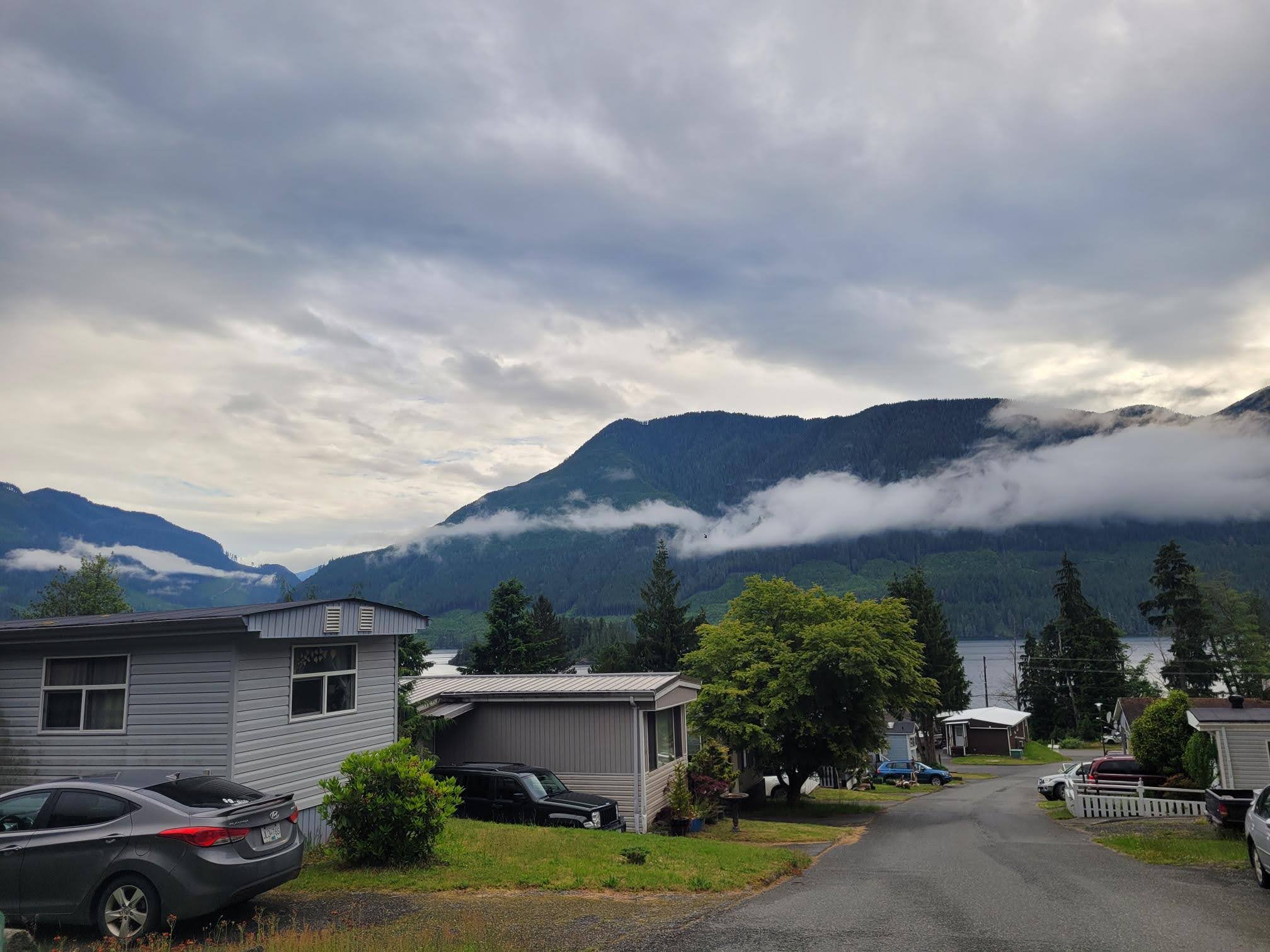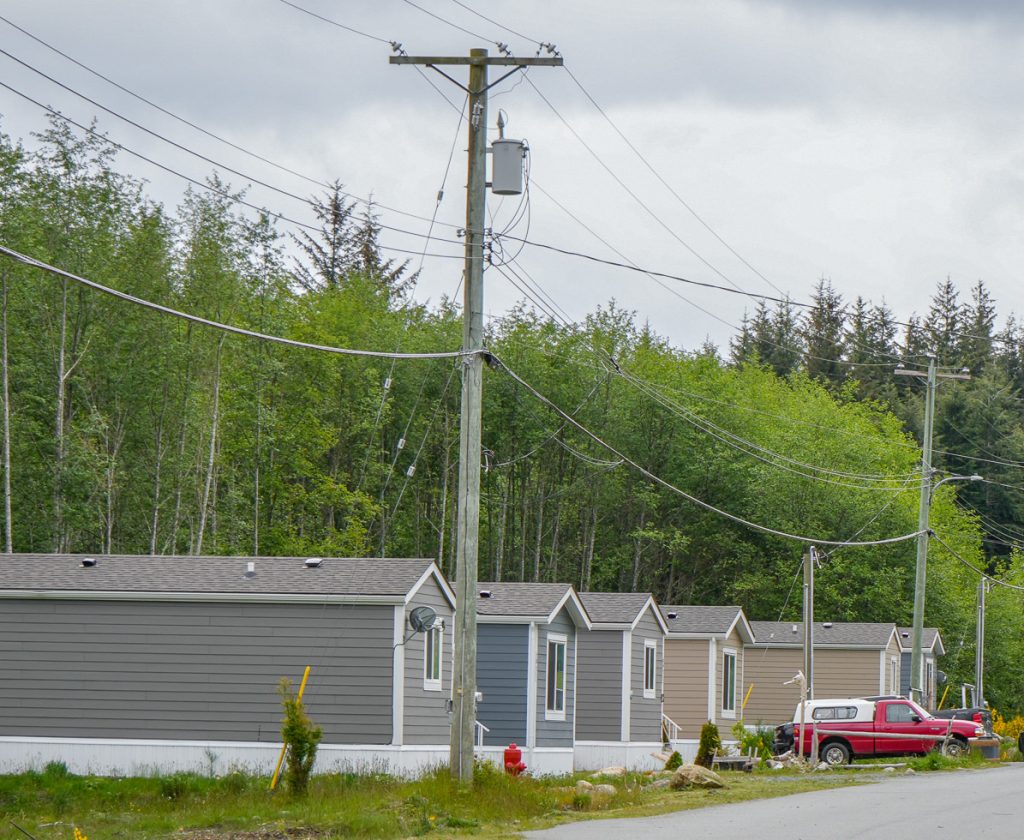Manufactured homes use 61% more energy per square foot than other homes—but there’s potential to change that.
I work with Ecotrust Canada’s Community Energy team, whose mission is to eliminate energy insecurity in BC. We prove this is possible through our on-the-ground programs to support underserved Indigenous communities and rural regions. We also build partnerships, conduct research, and advocate for policy changes to advance this goal and to inform our outreach. Our latest initiative explores how to improve the lives of people living in British Columbia’s manufactured home parks.
BC is home to over a quarter of all the manufactured homes (formerly known as trailers or mobile homes) in Canada. Making up approximately 4% of households in the province – about 80,000 homes – they are an important source of affordable housing. Most are in BC’s approximately 900 manufactured home parks, and 70% are in rural areas and small towns.
I dug into the barriers and opportunities for supporting energy-saving retrofits in BC’s manufactured homes, and what I learned opened my eyes to layers of nuance and webs of interconnection between issues that I hadn’t fully appreciated before.
Context – Manufactured Homes
Manufactured home parks and residents are diverse. I connected with residents across 50 manufactured home parks, and gathered insights from 125 community members who shared their experiences and expertise about the challenges and opportunities they see in their neighbourhoods. Many parks are great, with competent and caring management, nice amenities, and friendly neighbours who organize community events and watch out for each other.
“[Our] community provides connection, support and safety to residents, many of whom are 65+.” – Resident
“Great management and owner. Very nice place to live.” – Resident
However, I heard about other parks that are unpleasant places to live, whether because of the condition of the homes and roads, difficult neighbours, managers who are either stretched too thin, or even abusive, or all of the above. Because manufactured homes are costly and difficult to move, homeowners can find themselves trapped, with the sunk cost of their home literally anchored to a property fraught with issues.
“The off-site manager is making everyday living impossible and uncomfortable due to harassment and unfair application of rules and procedures.” – Resident
Meanwhile, although manufactured homes often have a clever floor plan that makes good use of a relatively small space, they are often poorly insulated and draughty, so they can become ovens in hot weather, and they use a lot of energy for heating during cold weather. They use, on average, 61% more energy per square foot than other types of homes.
Many residents I heard from are on a tight budget, so when their energy bills are through the roof, they are forced to make tradeoffs that negatively affect their health, their comfort, and their ability to work or plan for the future. This is energy insecurity, and households living in manufactured homes have the highest likelihood of experiencing it (Energy Poverty in Canada: a CUSP Backgrounder).
“When living on a below-poverty-level income, covering the bare minimum of pad rent, utilities, groceries and travel is already quite difficult—there are no monies left over for clothing or other necessities.” – Resident

Retrofit Benefits and Barriers
Energy-saving retrofits can make a huge difference in these homes and can significantly improve people’s lives by saving money and increasing comfort—not to mention reducing energy use and pollution, and improving resilience to extreme climate conditions. The provincial government has recognized this and is offering extensive support for retrofit work, which is great. But manufactured homeowners still face a variety of obstacles.
First, how do they hear about these programs and know who to trust? I heard from both residents and contractors about the challenges these households face in applying for rebate and retrofit programs.
“I live in a seniors’ park where most of the residents are not good at using online services or applications.” – Resident
“The various types of ineptness, scams and frauds are so high, it’s very frustrating trying to find anyone we can trust to do a good job, be affordable, and not disappear.” – Resident
Even if a resident decides they want to proceed with retrofits, they might still be stymied by the rules in their park. Many park owners want to support residents but fear that heat pumps could strain their park’s electrical infrastructure. Upgrading underground wires is costly, so many have banned heat pumps altogether.
Over 60% of residents who responded to my survey said that restrictive park rules were a medium or huge barrier to home retrofits. I’m hearing about new heat pump bans every week, so that percentage is likely increasing.
In some parks, certain restrictions to protect electrical infrastructure might be necessary, but heat pump bans have many drawbacks. They prevent residents from using available rebates. They prevent reductions in electrical usage from less efficient electric heaters and air conditioners. They also restrict owners from protecting themselves from the serious health risks posed by extreme heat events like the 2021 heat dome; residents without adequate cooling could suffer preventable injuries and even deaths. And more broadly, heat pump bans perpetuate the social costs of energy insecurity, energy inefficiency, and unaffordability.
Moving Forward
After researching and publishing “Manufactured Home Retrofits in BC,” my work with the Community Energy team is now to tackle the challenges my research identified. Our goal is to support both manufactured home residents and park owners and managers to enable energy-saving retrofits.
As a first step, we’re working with several park owners to examine their parks’ electrical capacity and find solutions that protect the infrastructure, while also allowing retrofits. From there, we hope to provide more park owner education, workshops and support for residents to access retrofit programs available to them, and advocacy for policies and funding that will strengthen and improve this source of affordable housing in the province.
We hope our direct support will prove what is possible, helping us to shift the broader landscape: to improve the conditions and the accessibility of retrofits across BC’s manufactured home parks.
[Published Oct. 23, 2025]


